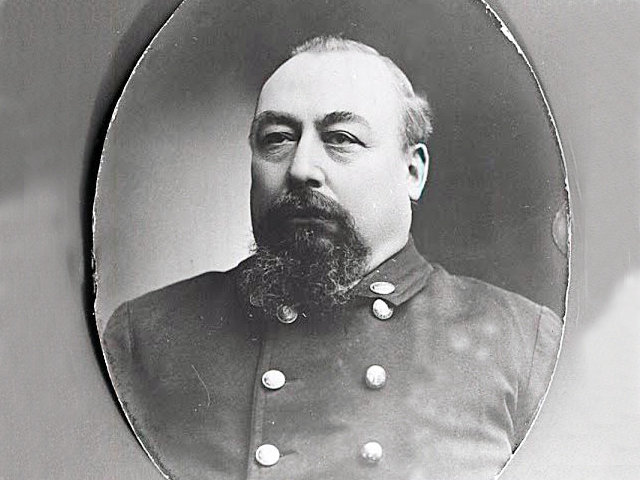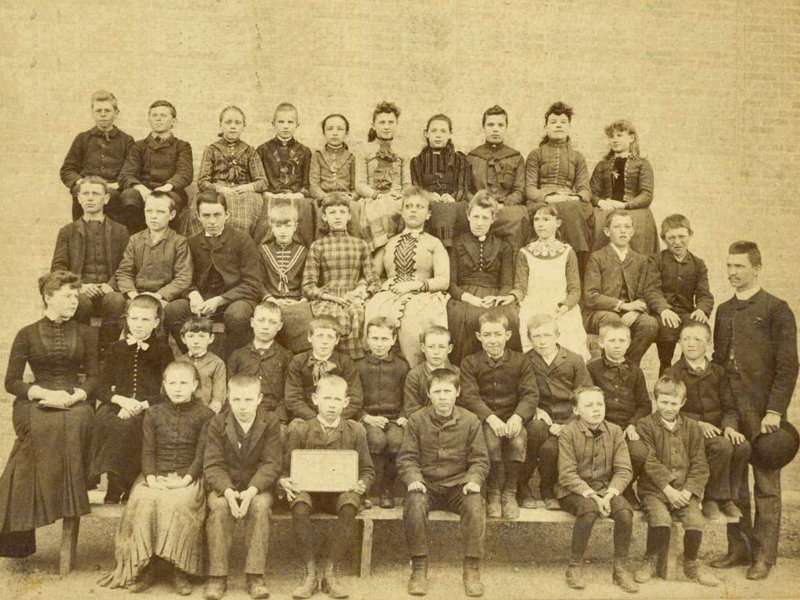There are countless Milwaukeeans who have left an indelible mark on the city, even though folks rarely utter their names. More than the Kilbourns, Juneaus and Walkers, these folks, who toiled for their town and have now been relegated to relative obscurity, have captured my attention.
One of them is Sebastian Brand, a German immigrant firefighter and mason turned architect, who is not to be confused with Sebastian Brand, a German immigrant boiler maker, whose 1850s Galena Street home survives out on a leafy green lot out in Oconomowoc.
Brand – the former – was born Aug. 22, 1844 to Johannes Brand and Margaretha Wild in Nierstein, Germany (in the Hessen-Darmstadt region), on the banks of the Rhine River. Apparently, Brand – the latter – was also born there, sometimes rendering this research somewhat confusing. Did I mention both Brands also lived on Galena Street? Oy.
In November 1865, Brand emigrated to the United States and spent some time in Chicago before landing in Milwaukee, where he married Augusta Gesse on Feb. 19, 1871.
The Brands had 13 children, only two of whom outlived their father and researching this part of Brand’s life was really just tracing one tragedy after another.
A son Charly was born in 1872 and another, Louis, followed in 1874. A daughter, Anna, was born in 1875. All three died in 1877. George was born that year and died in 1880. Emile, born in ‘79, died two years later, a year after Edward died at just one month old. Another son, Henry, died the same year he was born. And on and on.
Brand joined the Milwaukee Fire Department on Nov. 16, 1872 and was assigned to Engine Co. 5. On May 2, 1882, he was transferred to Truck No. 3 and on Oct. 22, 1884, he was appointed captain of Engine 9, after having climbed the ladder from pipeman to truckman to foreman to lieutenant.
On March 9, 1893, he responded to the Romadka Brothers fire on 3rd, between Kilbourn and Wells.
"We had been ordered to scale a ladder placed against the real wall of the building," Brand later recounted to a newspaperman. 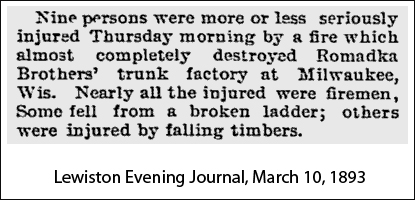
"With a roar that was heard several blocks away, the wall caved in and the ladder fell. We were buried beneath an avalanche of bricks and mortar. I woke up in the hospital the next day and they told me that my arm would be useless for the rest of my days."
With that devastating injury to his right arm, which reported hung "useless from its socket," Brand was retired from active firefighting duty.
Luckily for Brand – who had previously worked as a mason but had no formal training as an architect – he’d already been moonlighting for the Milwaukee Fire Department designing firehouses.
By the time he was injured, he’d already designed houses for Engine 9 (1885), Ladder 5 (1886), Engine 4 (1888), Engine 11/Ladder 6 (1888), Engine 14 (1889), Engine 16 (1890), Engine 18 (1890), Engine 2 (1892) and Engine 10 (1893, picture just below).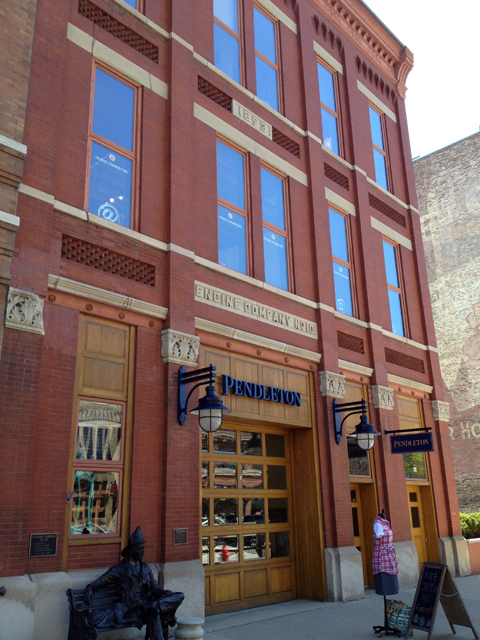
Brand received no special distinction and no extra pay for the design work he did while also fighting fires. In 1887, Chief James Foley said that Brand’s work saved the city $1,500 that year. In 1894, reporting on Brand’s architectural work since 1883, Foley said Brand was "attending to his regular 9 duties as captain of Engine Company No. 5, as well. The direct saving to the city has been in round figures $14,966 (more than $400,000 today).
According to a city historic designation report for the Ladder 5 building, which still stands on the city’s East Side, "In 1885, under the leadership of Chief James Foley, the department embarked upon a new program to control and standardize the design and construction of firehouses. He directed Sebastian E. Brand, foreman of Engine 9 and an ex-mason, to design all the new stations.
"Brand’s work expressed both the increased concern for functionalism and a stolid masonry interpretation of Victorian styles. He often mixed Gothic and Classical detailing in generally vertical elevations. At least 10 of Brand’s designs – spanning nearly three decades – survive today, either in continuous use as fire engine houses or with a new use. Many of the smaller buildings were remarkably similar employing a two-story, three-bay design. In this scheme, two smaller bays with narrow windows [and a pedestrian door] flanked a central engine door. Otherwise straight cornices were varied on some structures by an inset gable over the central bay. A corner tower was sometimes added."
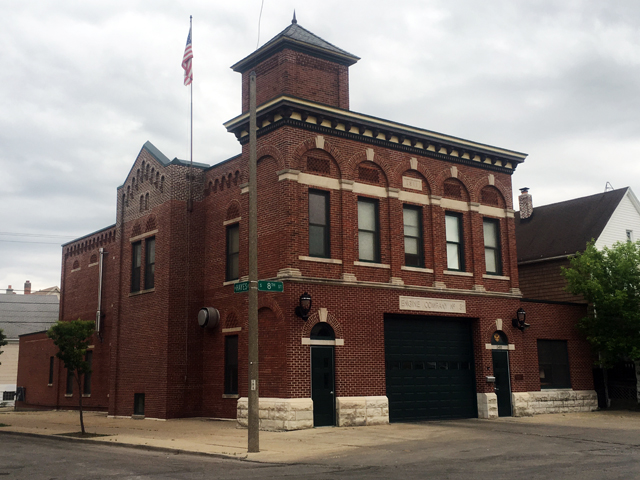
Engine 31, 2400 S. 8th St.
In 1912, a newspaper article celebrating his 40 years of service noted that Brand was the oldest man in the department at the time.
During his many years of service, one newspaper estimated that Brand fought about 5,000 fires, including the Newhall House fire, to which Brand’s Engine Co. 5 responded on the second alarm.
"He has cheated death by narrow margins many times. He has engineered thrilling escapes and has taken part in brave rescues."
After his injury, Brand was named superintendent of the department’s buildings and its draughtsman.
The 1912 article says that Brand designed houses for Engine Companies 4, 5, 6, 10, 12, 13, 14, 15, 16, 17, 18, 19, 20, 22, 23, 24, 25, 26, 27, 28, 29, 30 and 31 as well as for Trucks 5, 6 and 7, and Chemical No. 8.
It is for this work that Brand is now remembered, when he is remembered. I’ve written about some of his designs, including Truck 5, Engine 3 and Engine 2.
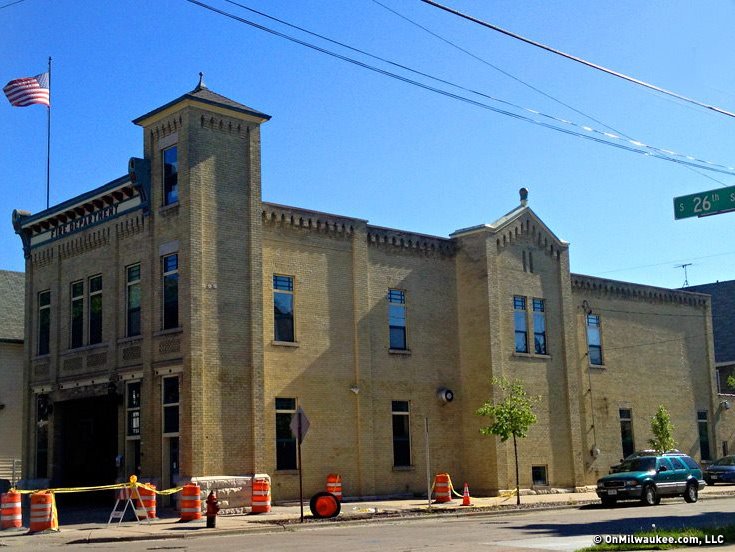
Engine Co. 26, 1140 S. 26th St.
In 1912, Brand said, "I expect to die in harness. The life has gotten into my blood and I’m sure I would be lonely away from the clanging gong and the apparatus."
But, in fact, Brand retired on pension on July 1, 1919, when he was 75. At the time, his son Albert, was assigned to Engine 4, and Brand was living with his daughter Louise and her husband William C. Brill, at 1090 41st St.
Beyond Brand changing his mind, there are other reasons this may have occurred, according to that Truck 5 historic designation report.
"Changes were beginning to take place, however, within city government. While Brand continued to design all new firehouses and accessory buildings and superintend all repairs to the buildings, carried out by the way by the firefighters themselves, his work began to be routed through the Board of Public Works starting around 1904. The Board of Public Works had a number of divisions and the Bureau of Bridges and Public Buildings became the department where all work on bridges and civic buildings became centralized.
"Over the next decade the Fire Department’s autonomy over the upkeep and construction of firehouses decreased. Whether this was the result of Sebastian Brand’s advancing age or merely part of the reformist reorganization of city government cannot be determined at this time. The emphasis on professional architectural credentials that culminated in the state licensing of architects in 1917 may also have played a part. Old time designers like Brand who came up through the ranks of the building trades were being retired from professional positions in favor of university trained architects who had theoretical knowledge but not necessarily any expertise in construction.
"In 1915 the shift between the departments had been completed and the Fire Department Annual Report indicates that the Bureau of Bridges and Public Buildings was supervising construction of the new fireboat house at today’s 105 N. Water St. The Bureau’s Charles Malig is credited with the design of the new structure and went on to design public buildings, including the popular Bungalow firehouses, through the rest of his long career with the city."
Sebastian Brand died at home on 41st Street in January 1923 at the age of 79 of what one newspaper called "the result of advanced age."
He was buried in the Fairview Mausoleum. When the mausoleum was closed in the mid-'90s, Brand's remains re-interred at Graceland Cemetery. The mausoleum was later demolished and the site is now home to – wait for it – a new firehouse for Engine 35 and Ladder 16.
While obituaries celebrated his service as a firefighter, the ones I found contain nary a peep about the many and enduring buildings he designed.
Born in Brooklyn, N.Y., where he lived until he was 17, Bobby received his BA-Mass Communications from UWM in 1989 and has lived in Walker's Point, Bay View, Enderis Park, South Milwaukee and on the East Side.
He has published three non-fiction books in Italy – including one about an event in Milwaukee history, which was published in the U.S. in autumn 2010. Four more books, all about Milwaukee, have been published by The History Press.
With his most recent band, The Yell Leaders, Bobby released four LPs and had a songs featured in episodes of TV's "Party of Five" and "Dawson's Creek," and films in Japan, South America and the U.S. The Yell Leaders were named the best unsigned band in their region by VH-1 as part of its Rock Across America 1998 Tour. Most recently, the band contributed tracks to a UK vinyl/CD tribute to the Redskins and collaborated on a track with Italian novelist Enrico Remmert.
He's produced three installments of the "OMCD" series of local music compilations for OnMilwaukee.com and in 2007 produced a CD of Italian music and poetry.
In 2005, he was awarded the City of Asti's (Italy) Journalism Prize for his work focusing on that area. He has also won awards from the Milwaukee Press Club.
He has be heard on 88Nine Radio Milwaukee talking about his "Urban Spelunking" series of stories, in that station's most popular podcast.

